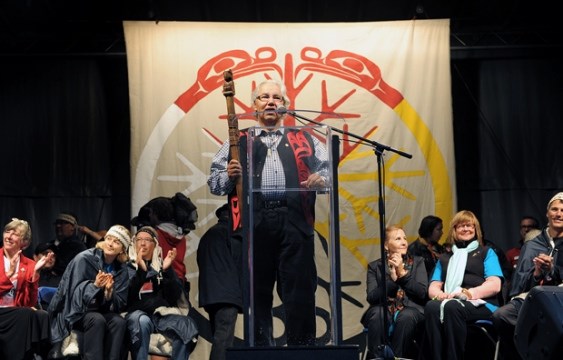It’s been nearly four months since Justice Murray Sinclair released the report from the Truth and Reconciliation Commission. In Ottawa on the day of the TRC report’s release, Sinclair told his audience, “Words are not enough. Reconciliation requires deliberate, thoughtful and sustained action.”
Included in the report were 94 calls to action relating to the roles that government and private citizens can play in realizing a true repair of the relationship between Aboriginal and non-Aboriginal people in our country.
Like all reports, the TRC report runs the risk of becoming a dust collector on the shelf. But only four months after its release, there are many reasons to feel encouraged. If you take stock of the initiatives popping up, it does seem that the report’s findings and recommendations are being taken to heart.
From institutions and governments, to unions and individuals, people are finding ways to gain better understanding of the harm Canada inflicted and how to forge a better relationship.
Just last week, the Vancouver Sun profiled Kristin Webster, an early childhood educator who provides a 10-week program to educate preschoolers about aboriginal culture and the residential school system. With field trips and age-appropriate story books, Webster’s program builds on the TRC recommendation calling on governments to develop age-appropriate curricula for kids ages K-12. While the program is currently only running at one UBC daycare, Webster is now in talks to expand it across the 20 daycares on UBC’s campus.
Many of the recommendations of the TRC report centre on our education system; and rightly so, given that the education system was the vector for the attempted cultural genocide of Canada’s aboriginal peoples. It makes sense that our education system must begin to tell the story of residential schools, not just to shed light on history, but to reinforce the practice of being honest about our mistakes.
The B.C. Teacher’s Federation, which last year supported its members travel costs to Vancouver so they could participate in TRC events, has just released an E-book called Project of Heart: Illuminating the Hidden History of Residential Schools, an interactive resource for teachers that includes multimedia elements to guide teachers looking to tell their kids what happened. The e-book launches at the same time as three new teaching guides introducing new curriculum covering the history of residential schools for grades 5, 10, and grade 11/12.
On the governmental front, last week, municipal governments convened the Union of BC municipalities. At the convention in Vancouver, representatives considered 164 resolutions, including one from the City of Vancouver urging the provincial and federal governments to respond to the TRC’s recommendations before the end of this year.
Another resolution called on the pronouncement of National Orange Shirt Day to commemorate the history and legacy of residential schools. Orange Shirt Day started in Williams Lake in 2013, inspired by Phyllis (Jack) Webstad, who was taken away from her grandmother at the age of six to a residential school.
We have a long way to go in the journey to reconciliation and missteps still occur. On Saturday, the Canadian Press reported that the City of Vancouver removed three bronze plaques installed in the sidewalk outside the Balmoral Hotel to honour the memory of Georgina Papin, Brenda Wolfe and Marnie Frey, three women among those murdered by serial killer “Willie” Robert Pickton. A third of Pickton’s victims were of aboriginal descent, and the removal of the plaques is not sitting well with the community.
The city spokesperson provided to defend the city’s decision to pull the unfinished memorial cited a lack of consensus from the project’s beginnings, but that’s a thin justification given it doesn’t sound like any consultation was done before the memorial’s removal.
Even George Papin, who came to Vancouver regularly to lay tobacco at his sister’s plaque, was unaware the bronze plaque was being removed. It could be a purely bureaucratic case of the right hand of city hall not knowing what the other hand is doing, but the fact is that systemic racism embedded within a bureaucracy is exactly what allowed the residential school system to do such damage to aboriginal people.
As Justice Sinclair said in June, what is needed is thoughtfulness and sustained action. For each level of government it will require a thorough review of the TRC recommendations and a huge shift in how government includes Aboriginal people.
twitter.com/trishkellyc



